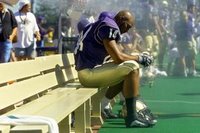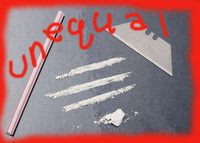 okay, one last post about the seattle times’ series on the 2000 university of washington football team. the series ended on a positive note with an inspirational story about linebacker anthony kelly who went to college to become a football star and against the odds…became a student.
okay, one last post about the seattle times’ series on the 2000 university of washington football team. the series ended on a positive note with an inspirational story about linebacker anthony kelly who went to college to become a football star and against the odds…became a student.
the idea of studying abroad captured kelly’s imagination and he won a scholarship to study in south africa. there, he worked with children and found a love for learning. as he said: “I had a chance to engage. To feel, touch and smell what I was reading in these books. That’s when I had the big idea of education as an engaged experience.” even as a number of his teammates were racking up long criminal records, kelly became a family man with big dreams for the children of south africa.
kelly is now working toward his master’s degree in education; he is currently in south africa again, this time leading a group of about twenty students on their own study abroad experience. he has ambitious goals and the drive to achieve them.
if you have a few minutes, it’s definitely worth the time to read the full version of his story.



 saturday’s
saturday’s 





